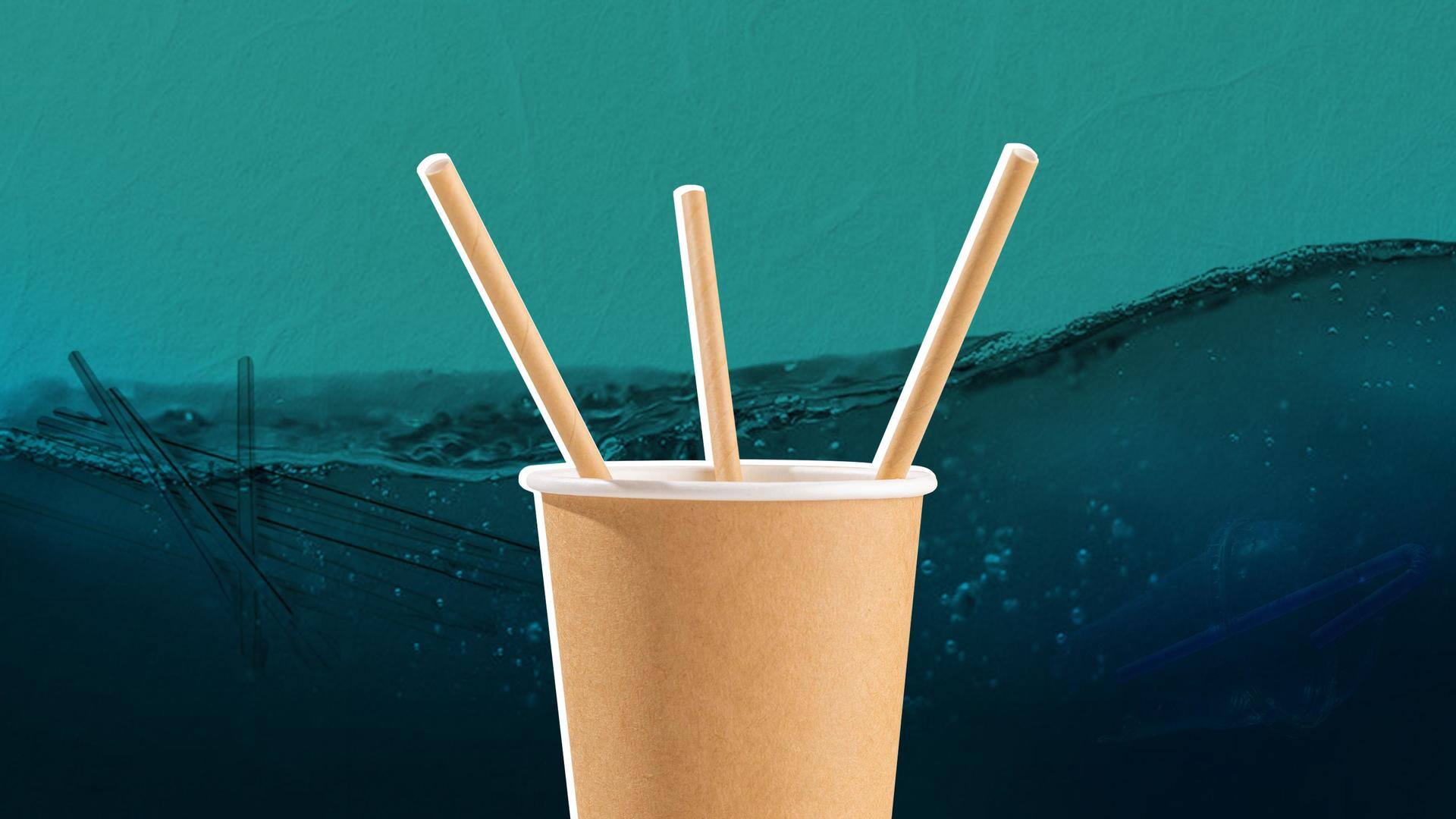
Do biodegradable straws really make a difference
What's the story
Disposable plastic straws are often used for just a few minutes before being discarded. The measure of their useability versus the harmful impact they leave on our environment is out of the scale. It is a rising menace that needs to be stopped as soon as possible. But what's the alternative? Biodegradable and metal straws? Do biodegradable straws really make a difference? Let's explore.
Final destination
Where do plastic straws end up?
Unfortunately, many plastic straws end up in the oceans and waterways, where they are often mistaken for food by marine animals. This can cause injury, suffocation, and even death. Apart from the ocean, plastic straws can also end up in landfills where they take hundreds of years to decompose. During this time, these plastic straws release harmful chemicals into the environment.
Bioaccumulation
How do plastic straws affect marine life?
When plastic straws and other plastic debris reach the ocean, they break into smaller and smaller particles over time, forming microplastics. These microplastics are then consumed by plankton, which are at the bottom of the food chain. As larger animals consume the smaller organisms that have ingested microplastics, the plastic particles accumulate and become more concentrated in their bodies. This process is called bioaccumulation.
Food chain
Why should we care about bioaccumulation?
When we consume fish that have accumulated plastic particles, we consume these harmful substances as well. For example, if a small fish ingests microplastics, and a larger fish eats the small fish, the plastic particles accumulate in the larger fish's body. If humans consume larger fish, they also risk getting exposed to the plastic particles that have accumulated in the fish's body.
Convenience
Why do we use plastic pipes in the first place?
Plastic straws are lightweight, flexible, and disposable, making them a convenient option for sellers and consumers. They are easy to use and do not require any cleaning or maintenance, which makes them a popular choice for restaurants, fast-food chains, and other businesses that serve beverages. They are cheap to produce, which further makes them an attractive option for businesses looking to reduce costs.
Decomposable materials
What are biodegradable straws made up of?
Biodegradable straws are made from natural materials that decompose and return to the earth without causing harm to the environment. These straws are made from various materials such as paper, bamboo, wheat, rice, cornstarch, and other plant-based materials. Some manufacturers also use seaweed, cassava, or sugarcane pulp. These materials are renewable, biodegradable, and compostable, which makes them a sustainable choice for consumers.
Better alternative
Are biodegradable straws a better alternative?
Biodegradable straws are designed to break down over time when they are exposed to natural elements such as sunlight, moisture, and microorganisms. It takes anywhere from a few weeks to a few months for a biodegradable straw to decompose fully. Some such straws can even be composted, which means they can be turned into nutrient-rich soil that can be used for gardening.
Ocean trash
Biodegradable straws reduce the threat of ocean trash
Using biodegradable straws will not solve the problem of water pollution instantly. It can, however, stop us from contributing more. According to one survey, plastic straws are the seventh most commonly collected garbage on beaches globally. We can prevent this scourge on our environment by switching to straws that degrade naturally, thereby maintaining oceans as the home of marine life instead of rubbish.
Carbon footprint
Switching to biodegradable paper reduces our carbon footprint
Production of plastic is notoriously energy intensive. Moreover, plastics are known to release greenhouse gases such as methane and ethylene as they degrade. On the other hand, the production of biodegradable paper straws requires less energy, thereby producing fewer carbon emissions. This means that by choosing biodegradable paper products over plastic, you can help reduce the carbon footprint of the products you use.